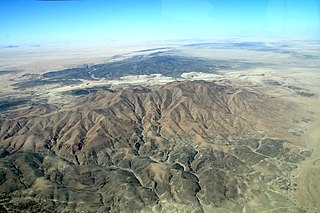
Lake Malawi, also known as Lake Nyasa in Tanzania and Lago Niassa in Mozambique, is an African Great Lake and the southernmost lake in the East African Rift system, located between Malawi, Mozambique and Tanzania.

Karonga is a township in the Karonga District in Northern Region of Malawi. Located on the western shore of Lake Nyasa, it was established as a slaving centre sometime before 1877. As of 2018 estimates, Karonga has a population of 61,609. The common and major language spoken in this district is the Tumbuka language, which is also a regional language of Northen Malawi.

Cameco Corporation is the world's largest publicly traded uranium company, based in Saskatoon, Saskatchewan, Canada. In 2015, it was the world's second largest uranium producer, accounting for 18% of world production.
Karonga is a district in the Northern Region of Malawi. The district covers an area of 3,355 km.² and has a population of 365,028. It is a border district between Malawi and Tanzania, mainly occupied by the Tumbuka and Nkhonde tribes. Other tribes include Henga tribe.

The Rössing Uranium Mine in Namibia is the longest-running and one of the largest open pit uranium mines in the world. It is located in the Namib Desert near the town of Arandis, 70 kilometres from the coastal town of Swakopmund. Discovered in 1928, the Rössing mine started operations in 1976. In 2005, it produced 3,711 tonnes of uranium oxide, becoming the fifth-largest uranium mine with 8 per cent of global output. Namibia is the world's fourth-largest exporter of uranium.

Uranium mining is the process of extraction of uranium ore from the ground. Over 50 thousand tons of uranium were produced in 2019. Kazakhstan, Canada, and Australia were the top three uranium producers, respectively, and together account for 68% of world production. Other countries producing more than 1,000 tons per year included Namibia, Niger, Russia, Uzbekistan, the United States, and China. Nearly all of the world's mined uranium is used to power nuclear power plants. Historically uranium was also used in applications such as uranium glass or ferrouranium but those applications have declined due to the radioactivity of uranium and are nowadays mostly supplied with a plentiful cheap supply of depleted uranium which is also used in uranium ammunition. In addition to being cheaper, depleted uranium is also less radioactive due to a lower content of short-lived 234
U and 235
U than natural uranium.
Paladin Energy Ltd is a Western Australian based uranium production company.
Uranium production is an important part of the African economy, with Niger, Namibia and South Africa creating up to 18% of the world's annual production. Many African countries produce uranium or have untapped uranium ore deposits.

Goodall Edward Gondwe is a Malawian economist who served in the cabinet of Malawi as Minister of Finance from 2014 to 2019. Previously he was Minister of Finance from 2004 to 2009, Minister of Local Government from 2009 to 2010, and Minister of Natural Resources, Energy and Environment Affairs from 2011 to 2012.

Ambrosia Lake is a uranium mining district in McKinley and Cibola counties in New Mexico north of Grants that was heavily mined for uranium starting in the 1950s. It is in an anticlinal dome.

The uranium mining debate covers the political and environmental controversies of the mining of uranium for use in either nuclear power or nuclear weapons.
Geoffrey L du Mhango is a Malawian economist, author, and politician. He was born in Karonga in the northern part of Malawi. He worked as a Senior development economist at the Development Bank of Southern Africa (DBSA) based in Johannesburg, South Africa for 10 years from 1987 to 1998 and for the ministry of foreign affairs in Malawi. His interests are in creating an integrated planning model for investment in urban infrastructure and pricing municipal services. He is a member of the Karonga Natural Resources Development Committee that is charged with overseeing the infrastructure and environmental impact being as a result of a uranium mining venture by Australian company, Paladin Energyin Malawi. Karonga.
Eunice Kazembe was a Malawian politician who was appointed Minister of Industry and Trade in the cabinet of Malawi in 2009. On 26 April 2012 President Joyce Banda named her new cabinet. Kazembe became minister of Education.
The world's largest producer of uranium is Kazakhstan, which in 2019 produced 43% of the world's mining output. Canada was the next largest producer with a 13% share, followed by Australia with 12%. Uranium has been mined in every continent except Antarctica.

The Langer Heinrich mine (LHM) is a large open pit mine located in the western part of Namibia in the Erongo Region. Langer Heinrich represents one of the largest uranium reserves in Namibia having estimated reserves of 57,000 tonnes of ore grading 0.055% uranium. The Langer Heinrich mine is currently owned by Paladin Energy Ltd with a 75% stake and CNNC Overseas Uranium Holding Ltd with a 25% stake. Paladin Energy sold the 25% to the Chinese National Nuclear Corporation (CNNC) in 2014 for a reported $190 million. The mine is under care and maintenance since 2018.
The Kanyika mine is an open pit mine which extracts niobium ore from a large deposit located in northern Malawi in the Northern Region, about 250 kilometers north of Lilongwe. It will be the second-largest mining operation in the country, behind the Kayelekera mine. Kanyika represents one of the largest niobium mineral resource in Malawi having estimated resources of 60 million tonnes of ore grading 0.29% niobium metal. The mine is the main project of the Australia-based Globe Metals & Mining Ltd.

The mining industry of Malawi, includes a number of gemstones and other minerals.
Grace Chiumia, is a Malawian politician who has served as Minister of Civic education in the Malawian cabinet, since 24 October 2017. Before her current appointment, she was the Minister of Home Affairs and Internal Security, in the Malawian Cabinet, from 6 September 2016 until 24 October 2017.
James Bond Kamwambi was a Malawian politician.










